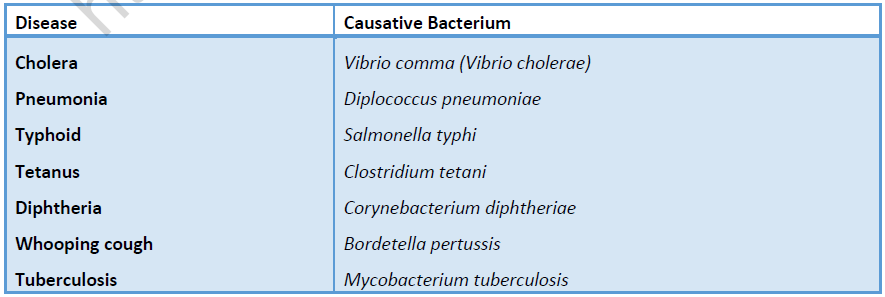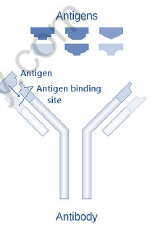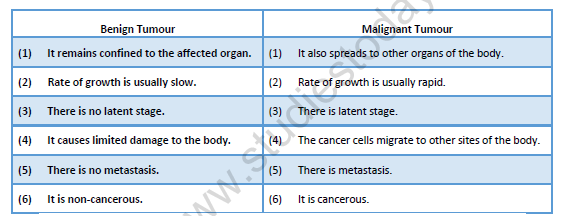Types of Diseases
The diseases may be broadly classified into two types: Congenital and acquired.
(i) Congenital Diseases: These are anatomical or physiological abnormalities present from birth. They may be caused by (i) a single gene mutation (alkaptonuria, phenylketonuria, albinism, sickle-cell anaemia, haemophilia, colour blindness); (ii) chromosomal aberrations (Down’s syndrome, Klinefelter’s syndrome, Turner’s syndrome); or (iii) environmental factors (cleft palate, harelip). Unlike the gene-and chromosome-induced congenital defects, environmentally caused abnormalities are not transmitted to the children.
(ii) Acquired Diseases: These diseases develop after birth. They are further of two types:
communicable and non-communicable.
(a) Communicable (Infectious) Diseases: These diseases are caused by viruses, rickettsias, bacteria, fungi, protozoans and worms.
(b) Noncommunicable (Noninfectious) Diseases: These diseases remain confined to the person who develops them and do not spread to others. The non-communicable diseases are of
four kinds –
(1) Organic or Degenerative Diseases: These diseases are due to malfunctioning of some of the important organs, e.g, heart diseases, epilepsy. Heart diseases result from the abnormal working of some part of this vital organ. Epilepsy may result from abnormal pressure on regions of the brain.
(2) Deficiency Diseases : These diseases are produced by deficiency of nutrients, minerals, vitamins, and hormones, e.g., kwashiorkor, beriberi, goitre, diabetes are just a few from a long list.
(3) Allergies: These diseases are caused when the body, which has become hypersensitive to certain foreign substance, comes in contact with that substance. Hay fever is an allergic disease.
(4) Cancer: This is caused by a uncontrolled growth of certain tissues in the body.
Bacterial diseases and their pathogens


The Immune System
(1) Immunity – The ability of the body to protect against all types of foreign bodies like bacteria, virus, toxic substances etc. which enter the body.
(2) The science dealing with the various phenomena of immunity, induced sensitivity and allergy is called immunology.
(3) Immune Response - Third line of defence. Involve production of antibodies and generation of specialized lymphocytes against specific antigens.
(4) Antigens – Substances which stimulate the production of antibodies, when introduced into the body.
(5) Antibodies – Immunoglobulins (Igs) which are produced in the body in response to the antigen or foreign bodies.
(6) All antibodies are immunoglobulins but all immunoglobulins are not antibodies.
(7) There are two major types of immunity: Innate or Natural or Non-specific immunity and Acquired or Adaptive or Specific Immunity.


Malaria:
Malaria has been for thousands of years a very serious disease of the tropical and temperate regions. It was almost eliminated a few years back with the efforts of World Health Organization (WHO) and our National Malaria Eradication Programme (NMEP), but unfortunately, it has appeared again.
(a) Symptoms: The attack of malaria is preceded by yawning, tiredness, headache and muscular pain. During the fever, the patient feels chilly and shivers, and has acute headache, nausea and high temperature. After a few hours, the body perspires freely and the temperature becomes normal. The cycle is repeated if no medicine is taken. Blood smear made during fever shows the malarial parasites. No parasites are seen at other times. In chronic cases, there is general weakness and anaemia (paleness) due to large-scale destruction of red blood corpuscles. This is also accompanied by enlargement of spleen and liver.
(b) Cause: Malaria is caused by the toxins produced in the human body by the malarial parasites, Plasmodium.
(c) Transmission: The malarial parasites are carried from the infected to the healthy persons by the femaleAnopheles mosquito. The mosquito picks up the parasites with the blood, when it bites an infected person. When this infected mosquito bites a healthy person, parasites migrate into his blood with the saliva, which the mosquito injects before sucking up blood to prevent its clotting.
(d) Types: There are four species of Plasmodium, which cause different kinds of human malaria –
(1) P. Vivax : It causes benign tertian malaria, which attacks every third day, i.e., after 48 hours.The fever is mild and seldom fatal. This species is wide-spread in the tropical and temperate regions.
(2) P. ovale : It also causes benign tertian malaria, which recurs every 48 hours. This species is found only in West Africa and South America.
(3) P. malariae : It causes quartan malaria, which recurs every fourth day, i.e., after 72 hours.This species is found in both tropical and temperate regions, but it is not very common.
(4) P. falciparum : It alone is capable of causing three types of malaria, viz., quotidian malaria,which attacks almost daily, malignant tertian malaria, which occurs every 48 hours, but is very severe and often fatal; and irregular malaria. This species is found only in the tropical region.
(e) Incubation Period: The incubation period for malaria caused by Plasmodium vivax is about 10 days.
(f) Life-history: Plasmodium completes its life cycle in two phases and two hosts: asexual phase in the human host and sexual phase in the female Anopheles mosquito host.
Sexually Transmitted diseases
Acquired Immune Deficiency Syndrome (AIDS) :
Symptoms of AIDS: An HIV infection can be divided into 3 stages.
(1) Asymptomatic Carrier: Only 1%-2% of those newly infected have mononucleosis-like symptoms that may include fever, chills, aches, swollen lymph glands, and an itchy rash. These symptoms disappear, and there are no other symptoms for 9 months or longer.
(2) AIDS Related Complex (ARC): The most common symptom of ARC is swollen lymph glands in the neck, armpits, or groin that persist for 3 months or more.
(3) Full-Blown AIDS: In this final stage, there is severe weight loss and weakness due to persistent diarrhoea and usually one of several opportunistic infections is present.
(4) Treatment of AIDS: The drug zidovudine (also called azidothymidine, or AZT) and dideoxyinosine (DDI) prevent HIV reproduction in cells. Proteases are enzymes HIV needs to bud from the host cell; researchers are hopeful that a protease inhibitor drug will soon be available.AIDS Prevention: Shaking hands, hugging, social kissing, coughing or sneezing and swimming in the same pool do not transmit the AIDS virus. You cannot get AIDS from inanimate objects such as toilets, doorknobs, telephones, office machines, or household furniture. HIV has been isolated from semen cervical secretions, lymphocytes, plasma, cerebrospinal fluid,tears, saliva, urine and breast milk. The secretions known to be especially infectious are semen, cervical secretions, blood and blood products. Infection is spread :
(a) By sexual intercourse, vaginal and anal
(b) By infected blood, blood products, donated semen and organs
(c) By contaminated needles used :
(1) During the treatment of patients
(2) When drug abusers share needles
(d) From an infected mother to her child :
(1) Across the placenta before birth
(2) While the baby is passing through the birth canal
(3) Possibly by breast milk
Diagnosis: Once the host is infected by HIV. HIV detected by the ELISA Test. (Enzyme–linked immunosorbent assay a positive Elisa should be can firmed using another test called the western blot test.
Cancer: Cancer is an abnormal and uncontrolled division of cells, known as cancer cells that invade and destroy the surrounding tissues. Generally Cancer is defined as uncontrolled proliferation of cells without any differentiation.
(i) Neoplasms or Tumours : A neoplasm (new growth) is a mass of tissue that grows in excess of normal in an uncordinated manner and continues to grow after the initial stimulus has ceased.Tumours are classified as benign or malignant.
(ii) Oncology: (G. onkos – mass, tumour; logos – study of) is the field of biomedicine devoted to the study and treatment of tumours.
(a) Types of Tumors: There are two types of tumours : benign and malignant.
(1) Benign Tumour – (=Nonmalignant Tumour) : It remains confined to the site of its origin and does not spread to other parts of the body. It causes limited damage to the body. It is non-cancerous.
(2) Malignant Tumour (= Cancerous Tumour): It first grows slowly. No symptoms are noticed. This stage is called the latent stage. The tumor later grows quickly. The cancer cells go beyond adjacent tissue and enter the blood and lymph. Once this happens, they migrate to many other sites in the body where the cancer cells continue to divide. It is metastasis. Only malignant tumours are properly designated as cancer.
Differences between Benign Tumour and Malignant Tumour

Please click the link below to download pdf file of NEET Biology Health and Diseases Revision Notes

